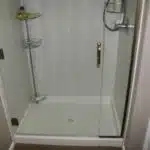Clogged shower heads are one of the most frustrating plumbing issues that homeowners encounter. A clogged shower head can reduce water pressure, resulting in a less-than-ideal shower experience. Additionally, mineral buildup and debris can cause unpleasant odors and stains. As a plumbing expert, I have encountered this issue numerous times and understand the importance of having a clear and functioning shower head. In this article, I will discuss how to clear a clogged shower head by providing tips, techniques, and products that can help homeowners resolve this issue themselves.
Before attempting any DIY solutions for clearing a clogged shower head, it is essential to understand the root cause of the problem. Mineral buildup is the most common culprit for clogged shower heads, especially in areas with hard water. Minerals such as calcium and magnesium can accumulate inside the spray holes and restrict water flow. Additionally, soap scum, hair, and other debris can also contribute to clogging. Knowing what causes clogs allows homeowners to choose effective cleaning methods that target the specific problem without causing further damage to their showers or plumbing systems.
Identifying The Cause Of Clogged Shower Heads
As a plumbing expert, it’s essential to know the common causes of clogged shower heads. One of the most typical reasons for blockages is mineral buildup. Identifying minerals in your water supply is crucial to figuring out if this is the cause of your clog. Minerals such as calcium and magnesium can accumulate over time within the showerhead’s small holes and affect its water flow.
Another common cause of clogs is dirt and debris accumulation. These particles can collect inside the shower head and prevent water from passing through efficiently. In some cases, mold or bacteria growth may also be responsible for blocking your shower head’s spray nozzles.
If you’re experiencing low water pressure or uneven spray patterns, it’s likely that your shower head has a blockage issue. Identifying the cause is the first step in fixing it. Next, we’ll discuss understanding hard water and mineral buildup, which will help us determine how to clear your clogged shower head effectively.
Understanding Hard Water And Mineral Buildup
Understanding water quality is an essential aspect of maintaining the functionality of your plumbing fixtures. Hard water, which contains high levels of dissolved minerals such as calcium and magnesium, can cause mineral buildup that leads to clogged showerheads. This buildup occurs when hard water evaporates, leaving mineral deposits behind.
Preventing mineral buildup is crucial in keeping your showerhead functioning efficiently. One way to do this is by installing a water softener system that reduces the amount of dissolved minerals in the water. Another preventative measure is to regularly clean your showerhead using vinegar or lemon juice, which are natural acids that dissolve mineral deposits.
In addition to preventing mineral buildup, it’s also important to address issues with soap scum and debris that contribute to clogged showerheads. In the next section, we will discuss how these factors play a role in clogging and provide steps for removing them. By understanding the various causes of clogged showerheads and taking preventative measures, you can ensure that your plumbing fixtures continue to operate smoothly for years to come.
The Role Of Soap Scum And Debris In Clogging
Anachronism: Back in the day, shower heads were mostly made of metal and had bigger holes. Nowadays, shower heads have smaller holes that can easily get clogged by soap scum and debris. Soap scum is a white or grayish film that builds up on surfaces after using soap and water. It contains skin cells, dirt, and minerals from hard water. Debris, on the other hand, refers to any loose particles that may find their way into your shower head.
The role of soap scum and debris in clogging cannot be overstated. When you take a shower, the water passes through the small holes in your shower head. As time goes by, soap scum accumulates around these tiny openings. This build-up reduces the size of the opening through which water flows out. Over time, this may cause complete blockage of your showerhead.
Effective cleaning solutions for soap scum buildup include vinegar and baking soda mixture or using commercial cleaners designed for removing soap scum. Always remember to use gloves when handling chemicals to avoid skin irritation or chemical burns. Regular cleaning of your shower head will prevent blockages caused by soap scum buildup and debris accumulation.
Transition: Now that we understand the role of soap scum and debris in clogging our showerheads let’s discuss how to identify signs of a blocked shower head without having to call in an expert plumber.
Signs Of A Clogged Shower Head
After understanding the role of soap scum and debris in clogging, it is essential to recognize the signs of a clogged shower head. Some common indicators include low water pressure, uneven water flow, and sputtering water. These issues can be frustrating for anyone trying to take a relaxing shower after a long day. However, instead of calling a plumber right away, there are some simple ways to unclog your shower head.
One of the most common causes of a clogged shower head is mineral buildup. Hard water contains minerals such as calcium and magnesium that can accumulate over time and block the flow of water. One way to prevent this from happening is by using a water softener or installing a filtration system. Additionally, using vinegar or lemon juice to clean your shower head regularly can help dissolve these minerals and keep your shower head functioning correctly.
Another preventative measure you can take is to remove any hair or other debris from your shower drain regularly. When debris accumulates in the drain, it can lead to blockages in your pipes and ultimately cause problems with your shower head. By keeping your drain clear, you reduce the likelihood of clogs forming in your pipes that can affect any fixtures connected to them.
Transition: Now that we have covered some common causes and prevention tips for clogged shower heads let’s move on to choosing the right cleaning method for your specific situation.
Choosing The Right Cleaning Method
When it comes to clearing clogs in shower heads, choosing the right cleaning method is crucial. Different methods may work better for different types of clogs, and some may be more effective than others. One common method is using steam to clear the clog, which offers a variety of benefits.
Benefits of steam cleaning include its ability to clean deep within the shower head without causing any damage to the metal or plastic components. It’s also an eco-friendly option, as it doesn’t require any harsh chemicals that could harm the environment. Additionally, steam cleaning can help remove bacteria and mold from inside the shower head, creating a healthier environment for users.
While DIY methods can be effective at clearing clogs in some cases, professional cleaning may be necessary for more stubborn or severe blockages. Professional plumbers have access to specialized tools and equipment that can clear even the most stubborn clogs quickly and effectively. They also have extensive experience dealing with plumbing issues and can often offer valuable advice on how to prevent future clogs from occurring.
Next, we’ll explore another popular DIY method for clearing mineral buildup: using vinegar. This household staple has been used for centuries as a natural cleaner and is particularly effective at removing mineral buildup from shower heads.
Using Vinegar To Clear Mineral Buildup
After determining the most suitable method to clean your showerhead, it’s time to get down to business. The first cleaning method we will discuss is descaling, which involves removing mineral buildup from your showerhead. One effective way of doing this is using a vinegar solution.
Vinegar is an acidic solution that can dissolve mineral deposits, making it an effective cleaning agent for showerheads. To use vinegar to clear mineral buildup in your showerhead, you need to mix water and vinegar in equal parts and pour the solution into a plastic bag. Then tie the bag around the showerhead, ensuring that it’s fully immersed in the solution. Leave it there for several hours or overnight before removing the bag and rinsing the showerhead with water.
Overall, vinegar solution effectiveness in clearing mineral buildup from showerheads depends on how often you use it and how severe the clogging is. If used regularly, vinegar solutions can effectively prevent mineral buildup from occurring in your showerhead. However, if you have stubborn clogs that won’t go away with vinegar solutions alone, you may need to try other methods such as using baking soda and lemon juice.
Baking Soda And Lemon Juice For Stubborn Clogs
If you are looking for natural alternatives to chemical-filled cleaning solutions, baking soda and lemon juice is a highly effective option. This combination works wonders in removing stubborn clogs from your shower head without causing any damage to the material. Both of these ingredients are readily available in most households, and their combination can create an effective solution that dissolves mineral buildup.
To use this method, start by mixing equal parts of baking soda and lemon juice until it forms a paste-like consistency. Next, apply the paste directly onto the surface of the shower head, ensuring that all nozzles and crevices are covered. Leave it on for about 15-20 minutes before rinsing off with warm water. You should notice an immediate improvement in water flow after using this simple yet effective solution.
Natural alternatives like baking soda and lemon juice are perfect for those who prefer chemical-free solutions or have allergies to certain ingredients commonly found in commercial cleaning products. By using this method, you can safely remove clogs without compromising the integrity of your shower head. However, if this method does not work or if you have a more severe blockage issue, you may need to consider professional plumbing services.
Transition: While baking soda and lemon juice can effectively remove minor clogs from shower heads, there may be instances where deeper cleaning is necessary. In such cases, removing the shower head may be required to access hard-to-reach areas.
Removing The Shower Head For Deep Cleaning
Using baking soda and lemon juice is a great way to get rid of stubborn clogs in your shower head. However, sometimes the buildup can be so severe that these natural remedies simply won’t do the trick. In such cases, it’s best to remove the shower head for a deep cleaning.
Tools needed:
- Adjustable wrench
- Teflon tape
- Bucket
Before you begin removing the shower head, it’s important to take some precautions. First and foremost, turn off the water supply to the shower. This will prevent any accidental leaks or flooding. Next, cover the shower arm with a cloth or tape to avoid scratching it during the removal process. Lastly, be sure to place a bucket underneath the shower head to catch any excess water that may come out.
Once you’ve taken all necessary precautions, use an adjustable wrench to loosen and remove the shower head from the shower arm. You may need to apply some force if the fixture has been tightly screwed on. Once removed, inspect both pieces for any signs of damage or wear and tear. If everything looks good, clean both pieces with warm water and vinegar solution using a toothbrush or pipe cleaner for hard-to-reach areas.
Using a toothbrush or pipe cleaner for hard-to-reach areas is essential when cleaning your shower head thoroughly. These tools can help dislodge any remaining mineral buildup or debris that may have accumulated over time. After cleaning both pieces thoroughly, apply Teflon tape on the threads of the shower arm before reattaching the showerhead using an adjustable wrench. Turn on the water supply and test for any leaks or irregularities in water pressure before enjoying your squeaky-clean showers once again!
Using A Toothbrush Or Pipe Cleaner For Hard-To-Reach Areas
When it comes to clearing a clogged shower head, using a toothbrush or pipe cleaner can be an effective solution for hard-to-reach areas. However, there are some key differences between the two tools that should be considered before choosing which one to use.
A toothbrush is a common household item that can easily be repurposed for cleaning shower heads. It is best suited for removing surface-level buildup and debris in areas that are easily accessible. On the other hand, pipe cleaners are designed specifically for reaching deep into narrow spaces and removing stubborn clogs. They are more flexible than toothbrushes and can bend to fit around corners and curves.
When using a toothbrush or pipe cleaner to clear hard-to-reach areas of a clogged shower head, there are some techniques that can help ensure success. For example, it is important to use gentle but firm pressure when scrubbing with a toothbrush, as too much force can damage delicate parts of the shower head. When using a pipe cleaner, it may be helpful to twist the wire slightly while inserting it into the nozzle to help dislodge any blockages.
| Toothbrush | Pipe Cleaner |
|---|---|
| Best for surface-level buildup | Best for deep clogs |
| Easily accessible | Flexible and can fit around corners |
| Requires gentle pressure | Can be twisted for added effectiveness |
Using a toothbrush or pipe cleaner can be an effective way to clear hard-to-reach areas of a clogged shower head. By understanding the strengths of each tool and using proper techniques, homeowners can successfully remove buildup and restore water flow. In the next section, we will discuss alternative methods for unclogging shower heads that involve avoiding harsh chemicals and abrasive tools.
Avoiding Harsh Chemicals And Abrasive Tools
When it comes to clearing a clogged shower head, there are many options available. However, harsh chemicals and abrasive tools should be avoided at all costs. Not only can these methods cause damage to the shower head, but they can also harm the environment. As a plumbing expert, I recommend exploring eco-friendly alternatives and DIY solutions for a safer and more sustainable approach.
One eco-friendly alternative is to use vinegar and baking soda. Simply mix equal parts of vinegar and water in a plastic bag, then place the bag over the shower head so that it is fully submerged in the mixture. Allow it to soak for at least an hour before removing and rinsing with water. Another option is to use lemon juice instead of vinegar for a refreshing scent. If you prefer a DIY solution, try using a toothbrush or small brush to gently scrub away any buildup on your shower head.
It’s important to remember that prevention is key. Regular maintenance can help prevent future clogs from occurring. This includes cleaning the shower head regularly with a gentle cleaner such as dish soap or hydrogen peroxide, as well as checking for leaks or other issues that could lead to buildup and blockages. By taking these steps, you can keep your shower running smoothly while also protecting both your shower head and the environment from damage.
Transition: Now that we’ve covered how to clear a clogged shower head without harsh chemicals or abrasive tools, let’s take a closer look at preventing future clogs with regular maintenance.
Preventing Future Clogs With Regular Maintenance
Regular maintenance of your shower head is essential in preventing future clogs. One of the most effective preventative measures is to regularly clean your showerhead. This can be done by removing the showerhead and soaking it in a mixture of vinegar and water, or by using a cleaning solution specifically designed for showerheads.
Another preventative measure is to install a filter on your showerhead. This will help to remove any minerals or sediment from the water before it reaches your showerhead, reducing the chance of clogs. It’s important to note that filters should be replaced regularly to ensure they continue to function properly.
In addition to regular cleaning and filter installation, it’s also important to address any underlying issues with your plumbing system. Hard water, for example, can cause mineral buildup in your pipes and appliances, leading to clogs and other issues. Installing a water softener can help to prevent these problems and improve the overall performance of your plumbing system.
Installing A Water Softener For Hard Water Areas
Regular maintenance is key to preventing clogs in your shower head. However, some areas are prone to hard water, which can lead to mineral buildup and frequent clogs. Installing a water softener is the most effective solution for such situations.
Water softeners not only prevent mineral buildup in your shower head but also have several other benefits. They improve the taste and smell of drinking water by removing excess minerals and chemicals. Softened water also requires less soap and detergent for cleaning purposes, resulting in significant cost savings over time.
When choosing a water softener brand, it’s essential to consider factors such as size, capacity, regeneration cycle frequency, and ease of installation. It’s recommended to consult with a plumbing expert or professional plumber to determine the appropriate model based on your household’s specific needs.
Upgrading to a low-flow shower head is another way to improve your shower experience while conserving water. Low-flow shower heads use less than half the amount of water compared to traditional showerheads without sacrificing pressure or performance. In addition, they help reduce energy costs associated with heating excess water and contribute towards sustainable living practices.
Upgrading To A Low-Flow Shower Head
As we strive to conserve water and reduce our carbon footprint, upgrading to a low-flow shower head is a wise investment that brings many benefits. These eco-friendly shower heads use less water per minute than traditional fixtures, resulting in lower utility bills and reduced water consumption. In fact, by switching to a low-flow shower head, you can save up to thousands of gallons of water each year.
To properly install a new low-flow shower head, follow these steps:
- Turn off the water supply to your shower.
- Remove the old shower head using pliers or an adjustable wrench.
- Apply Teflon tape to the threads of the shower arm before attaching the new fixture.
It’s important to note that not all low-flow shower heads are created equal. When choosing a new fixture, consider factors such as flow rate and pressure. Look for models with adjustable settings and aerated flow, which can provide a satisfying shower experience while conserving water.
Upgrading to a low-flow shower head is an easy way to make your home more environmentally friendly and save money on utility bills. However, if you encounter any issues during installation or notice leaks or other problems after installation, it may be time to call in a professional plumber for assistance.
When To Call A Professional Plumber
Upgrading to a low-flow shower head is a great way to conserve water and save money on your utility bills. However, over time, even the most efficient shower heads can become clogged with mineral buildup, reducing water pressure and diminishing your shower experience. If you notice that your shower head is no longer providing the same level of water flow as it used to, then it’s time to take action.
Signs of a clogged shower head include reduced water pressure or uneven spray patterns. Fortunately, there are several simple solutions that you can try before calling in a professional plumber. One option is to unscrew the shower head and soak it in a mixture of vinegar and hot water for an hour or two. This will help dissolve any mineral deposits that are causing the clog. Another option is to use a toothbrush or small wire brush to gently scrub away any debris from the surface of the shower head.
If these DIY methods don’t work, then it may be time to call in a professional plumber. A licensed plumber has the knowledge and tools necessary to diagnose and repair more complex plumbing issues. They can also inspect your pipes for signs of corrosion or other problems that may be contributing to your clogged shower head. With their expertise, you can enjoy a clear and refreshing shower again without worrying about low water pressure or uneven spray patterns.
Enjoying A Clear And Refreshing Shower Again
A clogged shower head can be frustrating, as it can make your showers less enjoyable and less effective. However, by taking the time to clean your shower head regularly, you can avoid this problem altogether. Regular cleaning of your shower head not only ensures that the water flows freely but also provides several other benefits.
One of the main benefits of a clear shower head is that it provides a better shower experience. With a clear shower head, water can flow freely, providing you with a more refreshing and satisfying shower. Additionally, when water flows freely through your shower head, it allows for better pressure regulation, which means that you can adjust the temperature and pressure to suit your preferences.
Another important benefit of regular cleaning is that it helps prolong the life of your showerhead. Over time, mineral deposits and other debris can build up inside the pipes leading to your showerhead. This buildup can cause corrosion and other damage to the pipes over time. By regularly cleaning your showerhead, you can prevent this buildup from occurring and extend the life of your plumbing system.
In conclusion, enjoying a clear and refreshing shower requires regular maintenance of your plumbing system, including cleaning your showerhead. The benefits of keeping your showerhead clean include better water regulation for a more satisfying experience in addition to preserving its longevity. Therefore, it’s important to make sure that you take steps to keep your plumbing system in good working order by performing regular maintenance tasks such as cleaning out mineral deposits from its components like the nozzle or valves so they don’t become clogged again!
Conclusion
The clogging of shower heads is a common issue that can be caused by various factors, such as hard water and mineral buildup or soap scum and debris accumulation. Understanding the root cause of the problem is crucial in selecting the right cleaning method. While some clogs can be easily remedied with a DIY solution, others may require professional assistance.
For areas with hard water, installing a water softener may prevent future clogging and prolong the lifespan of your shower head. Upgrading to a low-flow shower head can also reduce clogging while conserving water. However, if all attempts fail to clear the blockage, it may be time to call in a professional plumber.
In conclusion, identifying the underlying cause of clogged shower heads is paramount in finding an effective solution. Whether it involves regular cleaning or an upgrade to your plumbing system, taking action will ensure that you continue to enjoy a clear and refreshing shower experience. As plumbing experts, we recommend staying proactive in maintaining your shower head’s optimal performance for the long haul.
Image Credits
- “Day 363 – Clogs Fear Me” by lintmachine (featured)


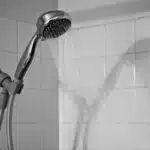

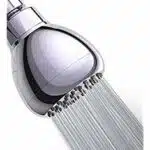

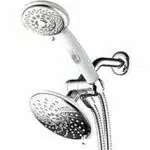
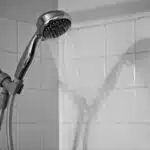
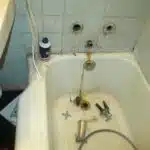

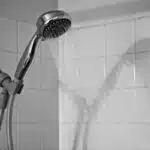









![How To Get Hair Out Of A Bathtub Drain 20 2/365 [Bathtub Drain]](https://green-life.blog/wp-content/uploads/2023/05/cOEu5edpkejq-150x150.jpg.webp)


